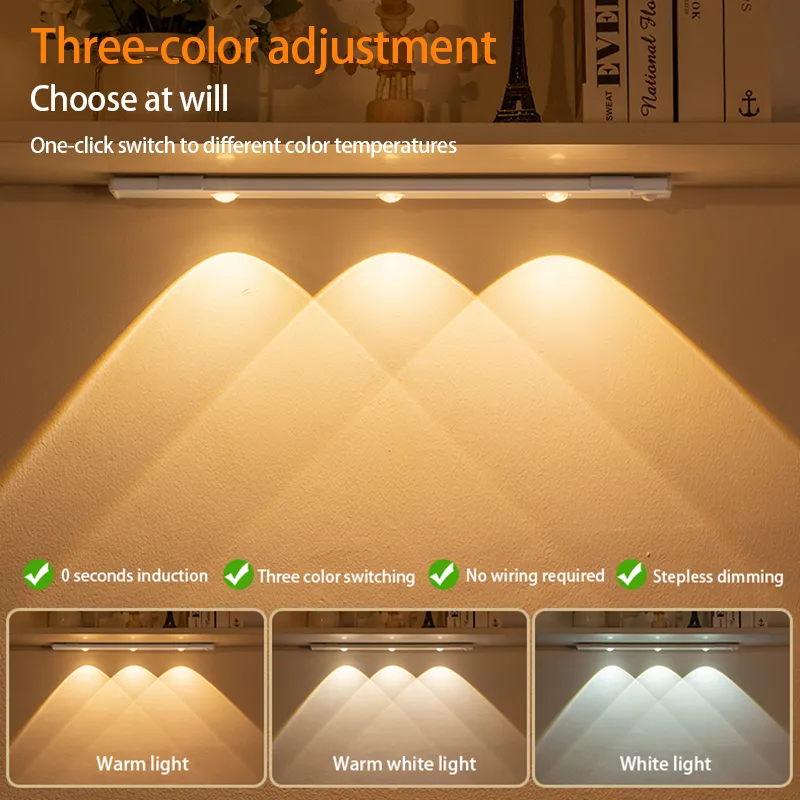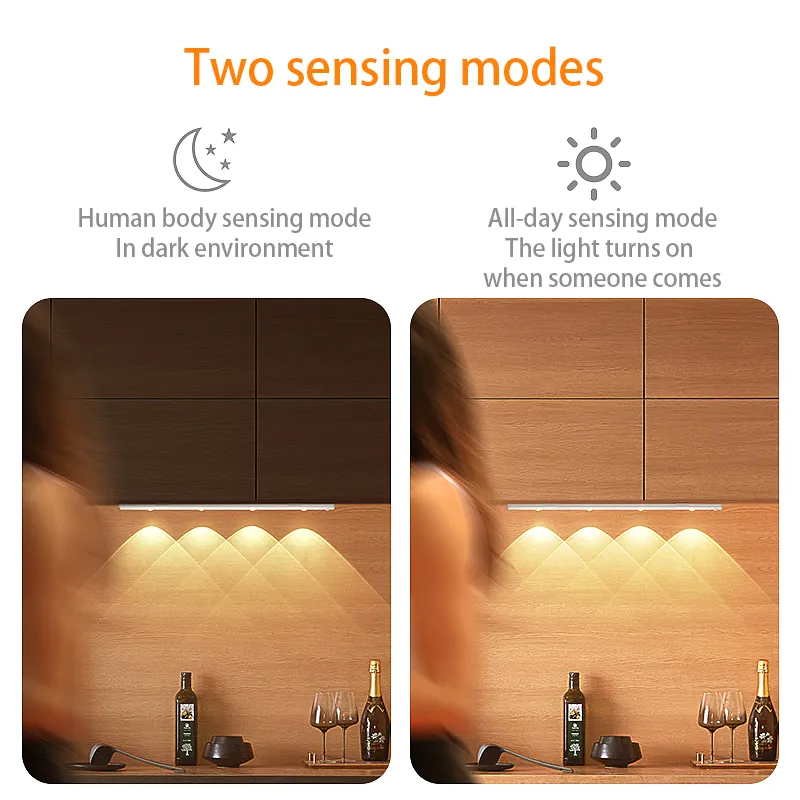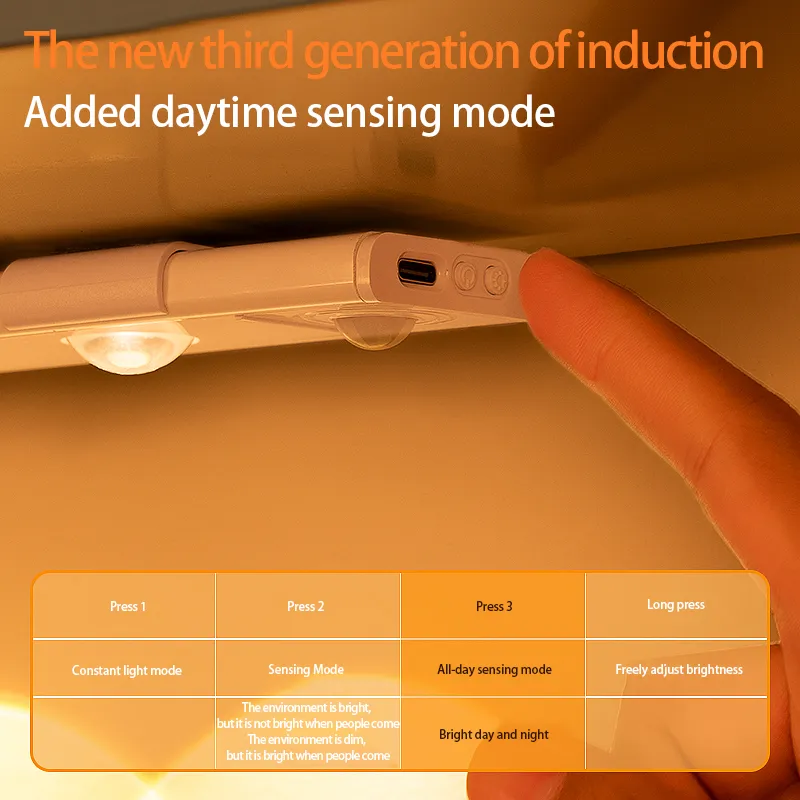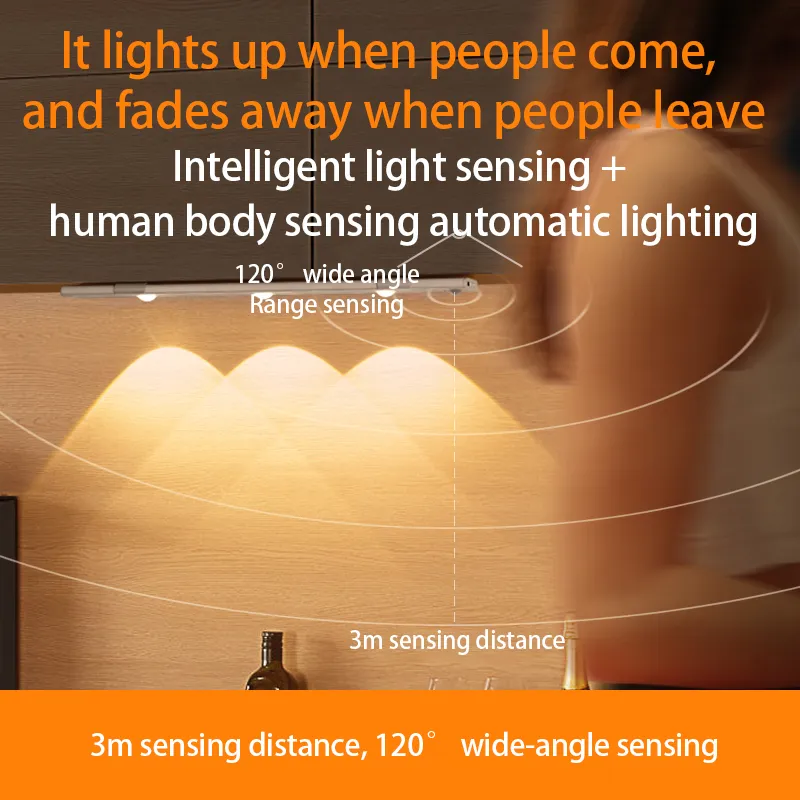What is the difference between light sensor and motion sensor night lights?
Night lights not only add a sense of warmth and security to the home environment, but also effectively improve the quality of life, especially when used at night. In the market, light sensor night lights and motion sensor night lights are two common smart lamps. Although their functions are similar and both can work automatically according to environmental changes, there are significant differences between the two in terms of working principles, application scenarios, advantages and disadvantages.
This article will explore the differences between light sensor and motion sensor brite night lamps in depth and help consumers choose the most suitable product according to their needs.

What is a light sensor night light?
A light sensor night light is a smart lamp that automatically adjusts the brightness of the light or turns it on and off by sensing the intensity of the surrounding light. Its core technology is a photosensitive sensor (also known as a light sensor or illumination sensor), which can control the working state of the lamp according to the intensity of the external light. Specifically, the light sensor brite night lamp can automatically light up when the ambient light is dark, and it will automatically turn off when the ambient light becomes brighter.
What is the working principle of the light sensor night light?
Light sensor night lights usually have a photoresistor or photodiode built in, which can sense changes in ambient light. When the ambient light intensity is lower than the set threshold, the light sensor activates the lamp and the light turns on. Conversely, when the light intensity exceeds the set threshold, the sensor stops sending signals and the lamp turns off. This design allows light sensor brite night lamps to provide automated lighting in dim environments without manual operation.
What are the advantages and disadvantages of light sensor night lights?
The main advantage of light sensor brite night lamps is their "auto-adjustment" feature. It can automatically start and stop according to the ambient light intensity, which is very suitable for placing in areas that need to be used at night, such as bedrooms and corridors. Users don't have to worry about forgetting to turn off the light, nor do they need to find a switch in the dark in the middle of the night.
However, light sensor brite night lamps also have some shortcomings. First, because it relies on changes in ambient light to trigger the switch, it may not work as expected in some environments where light changes are not obvious. For example, in a room with strong sunlight, the light sensor may malfunction due to the influence of external light sources. Secondly, because it adjusts the brightness based on the ambient light intensity, the light sensor brite night lamp may not be as sensitive as the motion sensor night light in some complex environments.

What is a motion sensor night light?
Unlike light sensor brite night lamps, motion sensor night lights control the switch of lamps by detecting whether there is any object movement in the environment. Its core principle is based on infrared or ultrasonic sensing technology. Motion sensors can sense the movement of human bodies or other objects, and automatically turn on or off the lights.
How does a motion sensor night light work?
Motion sensor night lights mainly use infrared sensors or ultrasonic sensors to detect surrounding movements. When someone walks into the sensing range of the sensor, the sensor sends a signal and the light automatically turns on. Usually, the sensing range of motion sensor brite night lamps is several meters and can work within a certain angle range. When no motion is detected, the light automatically turns off.
● Infrared sensor: This type of sensor determines whether a person or object enters the sensing area by detecting heat sources (usually human body heat). Due to the temperature difference between the human body and the environment, infrared sensors can quickly identify moving objects and activate lamps.
● Ultrasonic sensor: Ultrasonic sensors detect the presence of objects by emitting and receiving ultrasonic signals. The movement of an object changes the reflection pattern of the ultrasonic wave, triggering the switch of the lamp.
What are the advantages and disadvantages of motion sensor night lights?
A significant advantage of motion sensor night lights is their "auto-sensing" function. Instead of relying on external light, it is activated by detecting whether there is movement, which is suitable for a variety of environments, especially in places such as corridors, stairs or bathrooms. Even in a completely dark room, the motion sensor brite night lamp can light up immediately when someone approaches, increasing safety.
However, motion sensor brite night lamps also have some limitations. First, it is usually affected by factors such as sensor sensitivity, sensing angle, and installation location. If the lamp is installed in a blind spot or a place with a small sensing angle, some locations may not be effectively covered and cannot be lit normally. Secondly, the battery life of motion sensor night lights is relatively short because it needs to constantly scan the environment and consumes more power.

Light sensor vs. motion sensor brite night lamp: what is the difference?
Although the ultimate effect of light sensor night light and motion sensor brite night lamp is to provide users with convenient night lighting, their working principles, application scenarios and advantages are quite different. The following are the main differences between them:
Different working principles
● Light sensor night light: automatically turns on and off the light by detecting the light intensity of the environment. The light will only turn on automatically when the light is dim.
● Motion sensor night light: controls the switch of lamps by sensing the movement of objects in the surrounding environment, usually using infrared sensors or ultrasonic sensors.
Different applicable environments
● Light sensor night light: suitable for use in fixed environments, especially those with strong light during the day and weak light at night. Suitable for placement in bedrooms, corridors, hallways and other locations.
● Motion sensor night light: suitable for installation in places where people's activities need to be sensed at any time and automatically turned on and off, such as kitchens, toilets, corridors, etc. Especially in areas with frequent activities at night, motion sensor night lights are more convenient.
Sensitivity and response time
● Light sensor brite night lamp: slow response time, usually needs to rely on the amplitude of ambient light changes to trigger the switch. If the external light source does not change much, the lamp may not respond in time.
● Motion sensor night light: The response speed is fast. When the sensor detects motion, the lamp will light up quickly. Its sensitivity depends on the sensitivity of the sensor and the installation location.
Energy consumption
● Light sensor brite night lamp: Since it only works when the ambient light is dim, it can save energy in some cases. However, if the sensor is too sensitive, it may cause the light to switch on and off frequently, wasting energy.
● Motion sensor brite night lamp: It needs to work continuously to detect changes in the surrounding environment, so its energy consumption is relatively high. Especially in areas with frequent activities, the sensor has a large workload and a short battery life.

How to choose the right lamp?
According to different needs, consumers can choose a suitable light sensor or motion sensor night light according to the actual situation. If the ambient light changes significantly at home and there is less activity at night, a light sensor night light may be a more suitable choice. If family members are active at night or need to switch the lights on and off frequently in a dim environment, a motion sensor night light is more suitable. Here are some suggestions:
Choose a light sensor night light:
If you live in an environment where light changes regularly, a light sensor brite night lamp will be able to work automatically according to the external light intensity.
Suitable for places such as bedrooms and study rooms that require less manual operation.
Choose a motion sensor night light:
If you need to have lighting at all times in a dark environment, a motion sensor night light can provide instant response and increase safety.
Suitable for installation in corridors, stairs, kitchens and other places, especially areas where the elderly and children frequently enter and exit.
Huari Lighting Co., Ltd is a professional LED lighting manufacturer that has been serving global markets since 1996. Our comprehensive product range includes energy-efficient LED lights such as downlights, ceiling lights, track lights, and bulbs. Our products adhere to international certifications including CE, RoHS, and ERP, ensuring the highest standards of quality. If you're looking to buy LED lighting in bulk, our factory offers competitive wholesale prices, discounts, and customized solutions to meet your business needs.
